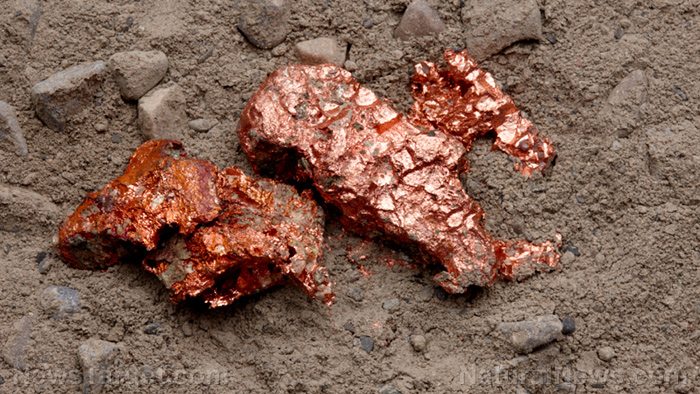Top symptoms of aluminum poisoning and toxicity
07/14/2018 / By Earl Garcia

Exposure to high levels of aluminum may lead to potentially harmful toxicity. Old age and reduced kidney function are two most common risk factors associated with aluminum poisoning. According to an article published in Medscape.com, aluminum toxicity is commonly found in patients with renal impairment. Long-term hemodialysis is also linked to increased odds of aluminum poisoning, as the treatment may lead to the accumulation of the heavy metal in the body. Symptoms of aluminum toxicity may include the following:
- Anemia
- Impaired iron absorption
- Muscle weakness
- Seizures
- Impaired immunity
Aluminum toxicity is also found to trigger:
- Bone pain
- Non-healing fractures
- Spinal deformities
- Premature osteoporosis
Other more prominent symptoms of aluminum toxicity include:
- Delayed growth in children
- Altered mental status
- Dementia
The heavy metal is found practically everywhere: food, water, air and even soil. This makes aluminum exposure unavoidable for most people. Some sources of excessive aluminum exposure include:
- Foods containing high levels of aluminum
- Dusty environments
- Workplace air contaminated with aluminum dust
- Living in areas where aluminum mining and processing take place
- Living near harmful waste sites
- Living in areas where aluminum levels are naturally high
- Receiving vaccines with aluminum
Aluminum is the most abundant metal in the planet, and is widely known for its many uses in various industries such as metalworking, construction, and health care. The heavy metal is often combined with other elements including oxygen, silicon, and fluorine. Aluminum is used in the production of various common commodities such as beverage cans, pots and pans, airplanes, siding and roofing, and foil. According to the Center for Disease Control and Prevention (CDC)’s Agency for Toxic Substances & Disease Registry (ATSDR), the heavy metal is also used in water treatment and abrasives, as well as medications and personal care products including antacids, astringents, buffered aspirin, food additives, and antiperspirants. The ATSDR cautioned that excessive aluminum exposure is tied to adverse musculoskeletal, neurological, and respiratory conditions.
Certain activities involving aluminum use are also found to spur adverse effects on both human health and the environment.”Coal burning by …. electric utilities, produces heavy ash that settles out, as well as fly ash that formally went up the smokestack into the atmosphere, but is now captured and stored because of its well-known adverse human health effects and damage to the environment…Such clandestine geoengineering activities exposed humanity and Earth’s biota to highly mobilized aluminum, a toxic substance not generally found in the natural environment and one for which no natural immunity had evolved. During the period of coal fly ash utilization for clandestine geoengineering, aluminum-implicated neurological diseases experienced explosive growth profiles, including autism, Alzheimer’s, Parkinson’s, ADHD, and others, as well as manifold destruction of plant and animal life,” the researchers wrote in GeoEngineeringWatch.org.
Aluminum toxicity affects brain health
A large number of clinical studies have previously established that excessive aluminum exposure is detrimental to brain health. In fact, a 2016 study published in the Journal of Trace Elements in Medicine and Biology revealed that people who died of familial Alzheimer’s disease had the highest concentrations of aluminum in their brain tissue. The research team also found that the amount of aluminum in brain tissue samples examined were nearly identical to individuals who died of aluminum-induced encephalopathy.
Another study published in 2013 revealed that aluminum toxicity may negatively affect the body’s nervous system regardless of age. According to researchers excessive aluminum exposure in old age may trigger the onset of age-related neurological conditions that resemble Alzheimer’s disease. The research team also noted that similar results were observed in animal models. The findings appeared in Immunologic Research.
Read Aluminum.news for more coverage of this potentially toxic element.
Sources include:
Tagged Under: Aluminum, aluminum exposure, toxic chemicals, toxins



















